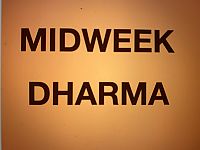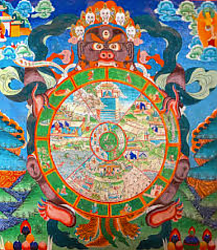Deleks as Building Blocks of Enlightened Society
This is a re-posting of an earlier article.
When we are aware of others’ needs,
everyday life is not limited to personal concerns.
(From The Three-fold Logic of Deleks, by the Vajra Regent Ösel Tendzin, 1981)
One of the things that first intrigued me about the Shambhala teachings was the notion of enlightened society. In the first chapter of Shambhala: Sacred Path of the Warrior, I read “The premise of Shambhala vision is that, in order to establish an enlightened society for others, we need to discover what inherently we have to offer the world.”
These teachings, it seemed to me, not only offered a path of working with one’s own mind and life, but of working with others and of cultivating a society based on respect, compassion, and human wisdom.
To this day in Tibet and other Asian countries, there are stories about a legendary Shambhala kingdom that was a model of enlightened government and society. Trungpa Rinpoche was very familiar with Buddhist texts describing this legendary kingdom and seems to have had a strong personal connection with it. While he did not talk about Shambhala very much during his early years in the west, in 1976 he began to give some talks on the Shambhala principles and subsequently designed a secular program of meditation, which he called “Shambhala Training”.
Trungpa Rinpoche gave much thought to how Shambhala society should be structured. Drawing on his study of government structures around the world, he concluded that the best organizational structure for the growing Shambhala community would be a ‘middle path’ between democracy (which can become too loose and individualistic) and monarchy (which can become too dictatorial). The idea of a delek system arose in his mind as a way to address both practical and philosophical aspects of governance. It was first introduced at the 1981 Kalapa Assembly at Lake Louise, British Columbia, where participants were divided into small ‘neighborhoods’, called deleks, each presided over by a leader (a dekyong), with the aim of fostering a sense of community among their respective members (delekpas). The experiment proved so successful that the delek system was subsequently adopted by the Rocky Mountain Dharma Center in Boulder, CO.
As the Shambhala Buddhist community grew, Trungpa Rinpoche wished that the structure that had proven so successful at Lake Louise and in Boulder should be adopted by sanghas elsewhere. He saw this explicitly as an expression of enlightened society and a manifestation of the Mahayana vision that there are two vehicles for the attainment of enlightenment –oneself and society. The delek system was Trungpa Rinpoche’s vision for not only fostering effective communication within the mandala, but also for extending our meditation practice outside the shrinerooms and into our neighborhoods and living rooms.
In the Burlington sangha, we have had an ebb and flow of deleks over the years. At times, we have had deleks around certain activities or interests (such as movies or cooking); at times we have had actual geographic neighborhood groups. From my own experience with the second manifestation of the South End delek, I can say that it has indeed helped me develop a sense of community within the sangha. To me, a delek is in many ways like a family or a neighborhood: We don’t get to choose the other people in it, but we learn to get along and appreciate people who may be quite different from ourselves. A delek is indeed a perfect training ground for enlightened society.
Anyone who has questions about the delek system or would like help getting one started, please contact Kerstin Lange at 865-8071 or [email protected]





